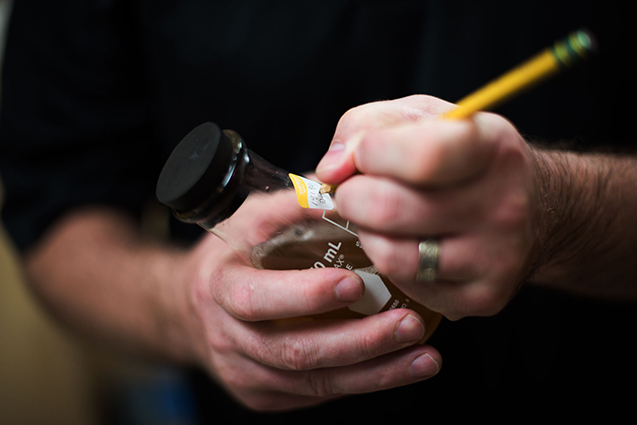
Staying Fresh: How To Keep Your Beer Tasting Great
By Adam Ritterspach
It’s a humid day in July and two pints, already glistening with condensation, have just been placed at my table. Mike Buckley picks his glass up. “Beer is a living thing,” he says before taking a sip of his Commodore Perry IPA. “It changes if it isn’t properly taken care of”. Buckley would know. Serving as Field Quality Specialist, he helps ensure GLBC is enjoyed fresh by executing quality control and educating retailers and beer fans across the entire GLBC distribution footprint. But how much does beer change, really? Does drinking a beer a few days beyond its freshness date really make that big of a difference? I chatted with Mike to find out.
What do you mean ‘beer is a living thing’?
Well, it doesn’t have a heartbeat or anything, but there are constant, ongoing chemical reactions happening in a beer that can change flavor, aroma, and appearance. These changes become more apparent as the beer gets older.
Why is that?
It all comes down to chemistry. The older a beer gets, the more susceptible it is to oxidization. As a beer oxidizes, the flavors intended give way to less pleasant tastes. Papery, skunky, and vegetal flavors can start to appear. An unpleasant sweetness can be present, too. Hops oxidize quickly and can lead to some real funky, cheesy flavors which is why IPAs and Pale Ales tend to have a short shelf life. Interestingly enough, darker beers tend to hold up better because of higher levels of antioxidants found in roasted barley.
Why is it important to drink my beer fresh?
Because it’s the only way to know how the brewer intended that beer to taste. Fresh beer tastes bright, crisp, and clean. Drinking old beer will not be the same experience as drinking one fresh, and the reaction someone may have to that out of date beer can lead them to unfairly judging the brewer, brewery, or retailer.
How can I ensure my beer stays as fresh as possible?
Keep it cold, keep it dark, and try to store it at a constant temperature. Light and heat both speed up the oxidization process. We think 38°F is the sweet spot for storage. A beer will age 2-3 times faster for every 10 degrees above 38°, but problems can arise if your beer is getting warm and cold and warm again. If there’s no space in your refrigerator, a dark, cool space like a basement can be an okay alternative.
But what if I go to a grocery store that is selling beer in an unrefrigerated space?
That’s the nature of the market right now, but so long as the beer has been kept out of sunlight and at a constant temperature, it will hold up OK. Just make sure you keep it cool and dark when you get it home.
What does GLBC do to ensure freshness?
Our lab monitors our beer during the entire brewing process to assist in limiting certain factors that can speed up aging. They monitor oxygen levels in each batch and determine an appropriate freshness date which is printed on the side of every bottle. Always, always check the freshness date before purchasing. We use dark bottles, wide labels, and high walls on our packaging to help protect the beer from sunlight. We’re also continuously working with our staff, retailers, and accounts to ensure they’re properly storing and serving our beer.
Is drinking beer beyond its freshness date safe?
Yes. Drinking old beer isn’t dangerous, but it may not be as pleasant. The changes in flavors and aromas are nothing more than just that: changes in flavors and aromas. It should be noted that some specialty beers, like our Rackhouse or Barrel-Aged Blackout Stout, get better with age, but I recommend drinking most beer offerings as fresh as possible.









